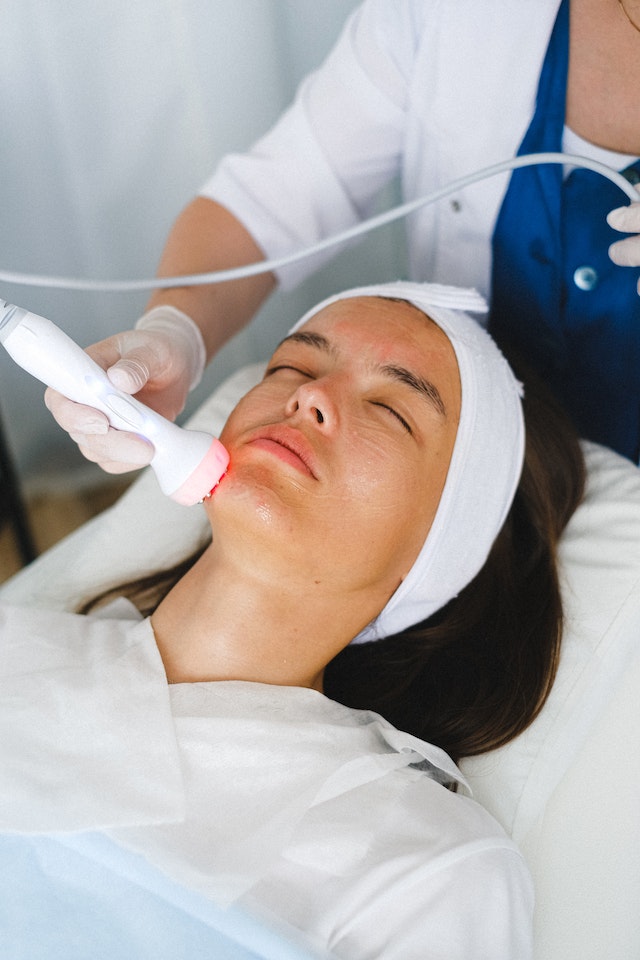Introduction
Toenail fungus, scientifically known as onychomycosis, often proves to be a persistent and challenging condition to treat. In recent years, laser therapy has emerged as a promising solution for combating this fungal infection. In this detailed exploration, we unravel the key aspects of laser treatments for toenail fungus, delving into their benefits, mechanisms, safety considerations, risks, alternative treatments, and what to expect during and after the procedure.
What Is Toenail Fungus?
Onychomycosis is a fungal infection primarily caused by dermatophytes, yeasts, or molds. Common symptoms include:
- Discoloration: Yellow, brown, or white spots on the nail.
- Thickened Nail: The nail becomes thick, brittle, and hard to trim.
- Crumbly Texture: Edges may crack or crumble.
- Distorted Shape: Nails can lift from the nail bed, causing pain.
Fungal spores thrive in warm, moist environments—think sweaty socks, shared shower floors, and tight shoes. If left untreated, the infection can spread to other nails or skin.
Traditional Treatments vs. Laser Therapy
Topical Treatments
- Creams & Ointments: Applied daily for 6–12 months.
- Medicated Nail Lacquers: Painted on weekly, slower to penetrate the nail plate.
Drawbacks: Low cure rate (around 10–30%) due to poor nail penetration.
Oral Medications
- Terbinafine and Itraconazole: Taken for 6–12 weeks under doctor supervision.
- Effectiveness: Cure rates up to 70%.
Drawbacks: Risk of liver damage, drug interactions, and gastrointestinal side effects.
Laser Therapy
- Non-Invasive Procedure: Uses heat energy to kill fungus under the nail.
- No Systemic Side Effects: Does not involve oral drugs.
Laser therapy offers a middle ground with better nail penetration and fewer risks.
How Laser Treatment for Toenail Fungus Works
Laser devices emit specific light wavelengths—often in the near-infrared spectrum—that pass through the nail plate and heat fungal cells. The key steps:
- Consultation: Your podiatrist examines your nails and confirms the diagnosis.
- Preparation: Nails are cleaned and, if needed, debrided (thinned) to improve laser access.
- Laser Session: A handheld device is moved across each infected nail for several minutes. You may feel warmth or mild tingling.
- Cooling: Some clinics use cooling sprays to keep you comfortable.
- Repeat Visits: Most patients need 2–4 sessions spaced 2–4 weeks apart.
The heat selectively destroys the fungus without harming skin or nail cells.
Types of Lasers Used
- Nd:YAG Laser: A common long-pulse laser effective at deeper fungal colonies.
- Diode Lasers: Portable and cost-effective, with slightly lower depth penetration.
- Fractional Lasers: Create microthermal zones to boost antifungal effects.
Each laser type has its pros and cons; your provider will choose based on infection severity and nail thickness.
Effectiveness and Success Rates
Clinical studies report clearance rates of 70–85% after a full course of laser therapy. Factors influencing success include:
- Infection Severity: Mild to moderate cases respond better than severe, lifelong infections.
- Number of Sessions: More sessions often yield higher cure rates.
- Nail Growth: Healthy nail regrowth can take 6–12 months; patience is key.
- Follow-Up Care: Using topical antifungals post-laser can boost results.
While not guaranteed, laser treatment often outperforms topical creams and avoids oral medication risks.
Potential Side Effects
Laser therapy is generally safe, but you may experience:
- Temporary Heat Sensation: Mild warmth during the procedure.
- Minor Discomfort: Some patients report slight aching for a few hours post-treatment.
- Redness or Swelling: Rare and short-lived around the nail fold.
Serious complications are extremely rare when performed by trained professionals.
Cost of Laser Treatment
The price for toenail fungus laser treatment varies by location and provider:
| Sessions Required | Cost per Session (USD) | Total Cost Estimate |
|---|---|---|
| 2 Sessions | $150 – $300 | $300 – $600 |
| 4 Sessions | $150 – $300 | $600 – $1,200 |
Many clinics offer package discounts for multi-session bookings. Check if your insurance covers any portion—most consider laser therapy elective.
Who Is a Good Candidate?
Ideal candidates for laser therapy:
- Mild to Moderate Infection: Less than 50% of nail plate affected.
- Failed Previous Treatments: No results from topical or oral drugs.
- Healthy Skin: No open wounds or active skin infections around the nail.
- No Severe Circulation Issues: Patients with uncontrolled diabetes or peripheral vascular disease may need extra caution.
A podiatry consultation will determine if you’re a suitable candidate.
Preparing for Your Appointment
- Trim and Clean Nails: Short, clean nails allow better laser penetration.
- Avoid Nail Polish or Artificial Nails: Remove any coatings at least 2–3 days prior.
- Shield Adjacent Skin: Your provider may place protective coverings around the toe.
- Wear Loose Shoes: Bring sandals or open-toed footwear for post-treatment comfort.
Clear communication with your provider ensures optimal treatment conditions.
Understanding Laser Therapy for Toenail Fungus
Benefits of Laser Treatment
Various laser devices, such as PinPointe Footlaser, GenesisPlus, and Noveon, have gained approval from the U.S. Food and Drug Administration (FDA) for treating toenail fungus. Studies indicate a high cure rate, with a 61% cure rate at 16 weeks and 91% clinical improvement at 180 days. Laser treatment is associated with negative cultures, indicating the absence of fungal infection post-treatment.
Mechanism of Action
Laser devices emit pulses of energy, generating heat that penetrates the toenail to the nail bed, where the fungus resides. This heat breaks down infected tissue, destroying the fungus and sterilizing the area to prevent new fungal growth. CO2 lasers and YAG lasers with specific wavelengths are commonly used for this purpose.
Treatment Process and Duration
While laser treatment inhibits fungal growth and destroys some microorganisms, it typically requires multiple sessions. On average, four treatment sessions are needed to eliminate nail fungus. Despite inhibiting growth and destroying some microorganisms, complete cure often necessitates repeat treatments due to the partial survival of the infection.
Choosing a Qualified Provider
Who Performs Laser Toenail Treatments?
Cosmetic dermatologists specialize in laser toenail fungus treatment. When seeking a provider, ensure they are board-certified, hold specialized certification for this treatment, and offer consultations to assess its suitability for your case.
Safety Considerations and Risks
Ensuring the safety of laser treatment is paramount. Here are key safety considerations and associated risks:
- Excellent Safety Record: Laser treatment for toenail fungus has demonstrated an excellent safety record, surpassing traditional antifungal medications.
- Alternative for Special Populations: Considered a safe alternative for individuals with kidney or liver disease, diabetes, or those who cannot tolerate drugs well.
- Proper Administration: Risks are minimized when treatments are properly administered by certified dermatologists.
Side Effects in Points
Possible side effects of laser toenail fungus treatment include:
- Burning Sensation: A mild to moderate but tolerable burning sensation during treatment.
- Infrequent Bleeding: Bleeding, which happens infrequently and is reduced by lowering laser intensity.
- Potential Damage: If treatment is done with too much intensity, the laser may penetrate the nail and wound the nail bed, potentially leading to the formation of an eschar under the nail—a scab-like sore comprised of dry, dead tissue.
Receiving treatment from a qualified and experienced provider significantly reduces these risks.
Comparing Laser Therapy to Alternative Treatments
Effectiveness
Research suggests laser treatments are more effective than topical or oral antifungal medications. Topical treatments show approximately a 45% improvement, and oral medications exhibit a 40% to 66% improvement in toenail fungus.
Treatment Duration
Laser treatment can typically be completed in one or two sessions, each lasting about 30 minutes. The skin heals in a few days, and additional sessions may be spaced two to six weeks apart.
Insurance Coverage
Unfortunately, laser toenail fungus treatment is considered elective and cosmetic, making it ineligible for health insurance coverage. The cost varies based on the severity of the infection and the number of sessions required, ranging from $100 to $400 per treatment session.
Conclusion
In conclusion, laser therapy presents a promising avenue for treating toenail fungus, offering high cure rates with minimal side effects. Choosing a qualified dermatologist is crucial for a safe and effective experience. While alternative treatments exist, laser therapy stands out for its efficiency and relatively quick procedure duration. As you embark on this journey to healthier toenails, understanding the nuances of laser treatment can empower you to make informed decisions for your well-being.










